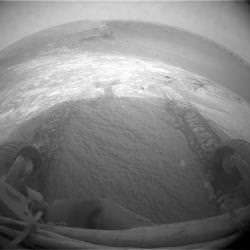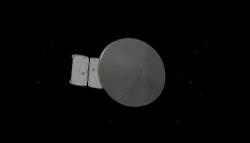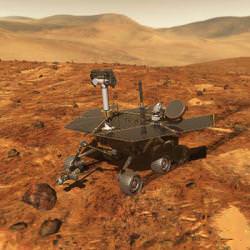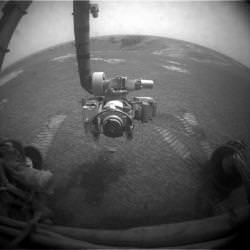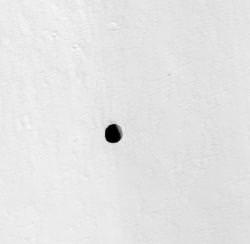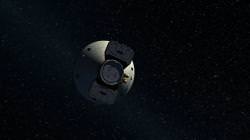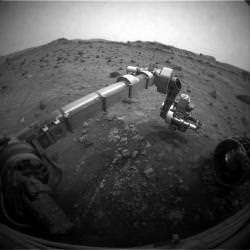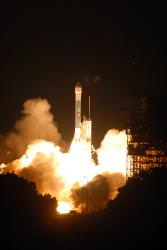With the powerful Martian dust storms dissipating, the Mars Exploration Rovers are ready to resume their duties, apparently no worse for wear. When we last met our heroes, Opportunity was about to climb down into Victoria Crater to look for evidence of ancient water. Now it took its first tentative steps into the crater, putting all six wheels onto the slope. And then it crawled back out again. Easy does it…
Victoria Crater measures 800 metres (half a mile) across, and it’s the largest impact crater either of the rovers have encountered during their travels on Mars. Since the crater cuts down through Martian rock, it gives scientists an unprecedented opportunity to peer back in time, when layers of rock were put down – ideally when there was liquid water present.
The rover team commanded Opportunity to drive just far enough on September 11, 2007 that all six of its wheels got onto the inner slope. The rover was then asked to come back out again, so the team could measure the amount that its wheels slipped on the slope. Right at the end, as Opportunity was just crawling out, its wheels slipped further than the rover team wanted, so they had it stop, with its front wheels still on the slope.
Now that they’ve gathered data on Opportunity’s traction on this angle, the rover team will analyze it to understand if entering or exiting the crater is going to pose a hazard.
Original Source: Rover status report

